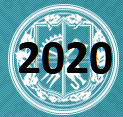FACIAL EXPRESSION RECOGNITION SYSTEM BASED ON GAN NETWORK DATA AUGMENTATION
Keywords:
Facial expression recognition, Deep learning, GAN, CNNAbstract
In recent years, facial expression recognition based on deep learning networks has developed. However, the deep model needs enough labelled data for training. Currently, the amount of data in most facial expression recognition databases is very limited. In order to solve the problem of insufficient data sets and unbalanced data sets, this paper designs a GAN-based method to generate more images to expand the training set and solve the problem of unbalanced data sets. In experiments, CNN's mainstream framework was used to verify the effect of enhanced data. The classification accuracy of the trained model on the original FER2013 data set is 62.17%, the classification accuracy after traditional data enhancement is 66.89%, and the classification accuracy after GAN data enhancement is 69.47%. The accuracy of the original CK + dataset is 90.15%, the accuracy of the traditional data after augment is 93.6%, and the accuracy of the GAN data after augment is 95.14%. Finally, the trained model is used in the design of OpenCV-based expression recognition UI system.
References
Lucey P, Cohn J F, Kanade T, et al.The extended Cohn Kanade dataset (CK) : a complete dataset for action unit and emotion- specified expression.Computer Vision & Pattern Recognition Workshops, 2010.
Lyons M J, Akamatsu S, Kamachi M, et al.The Japanese female facial expression (JAFFE) database. 3rd International Conference on Automatic Face and Gesture Recognition,pp.14-16,1998.
Goodfellow I. J., Pouget-Abadie J., Mirza M, et.al. Generative Adversarial Nets. NIPS, 2014.
Mehdi Mirza, Simon Osindero. Conditional Generative Adversarial Nets. NIPS, 2014. arXiv:1411.1784.
Olaf Ronneberger, Philipp Fischer, Thomas Brox, U-Net: Convolutional Networks for Biomedical Image Segmentation. 2015 arXiv:1505.04597.
François Chollet, Xception: Deep Learning with Depthwise Separable Convolutions. Google, 2017.
Christian Szegedy, Vincent Vanhoucke, Sergey Ioffe, et al. Rethinking the Inception Architecture for Computer Vision. 2015, arXiv:1512.00567.




